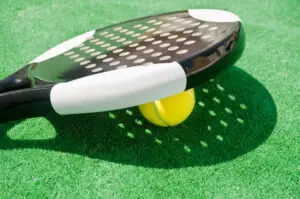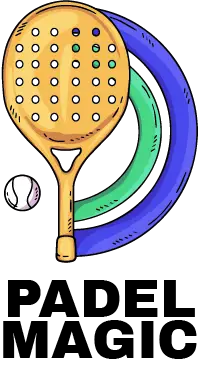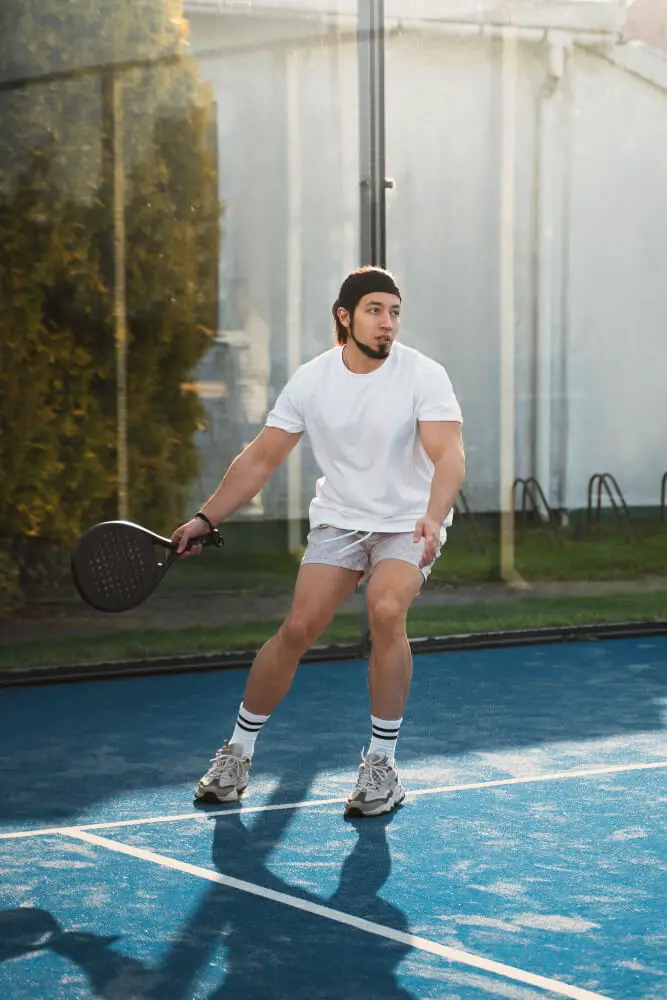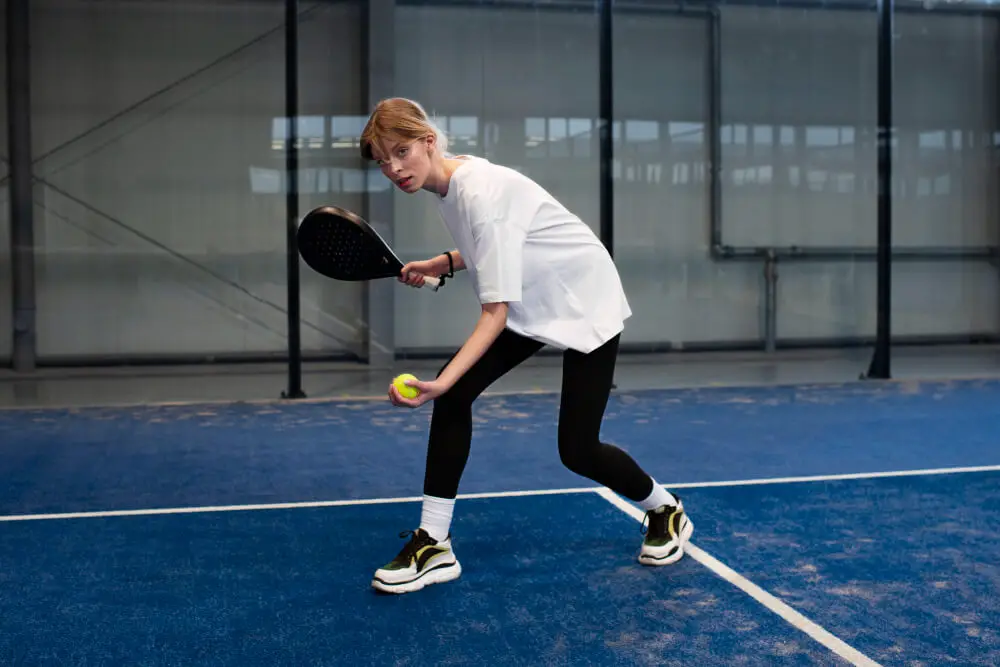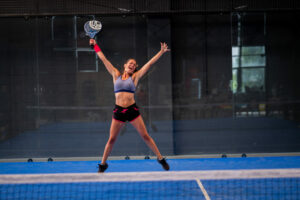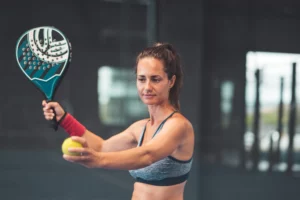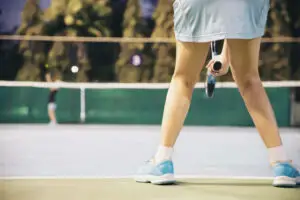Dimensions: A standard padel court measures 20 meters in length and 10 meters in width. The back walls are typically made of glass, reaching up to 3 meters in height, while the glass side walls extend for 4 meters. Beyond this, the court is enclosed with a metallic mesh up to a height of 4 meters.
The court is divided into two equal halves by a net at the center. The net’s height is 88 cm in the middle, increasing to 92 cm at the sides. Each half is further divided by a line, and another line 3 meters from the back wall denotes the service area.
Scoring: Scoring in padel closely mirrors that of tennis, with the primary distinctions being the underarm serve and the use of glass walls for ball play, akin to squash. The game’s rules permit the ball to rebound off the back and side walls, often leading to longer rallies compared to traditional tennis. Strategy, rather than pure strength and power, plays a key role in scoring points in padel.
